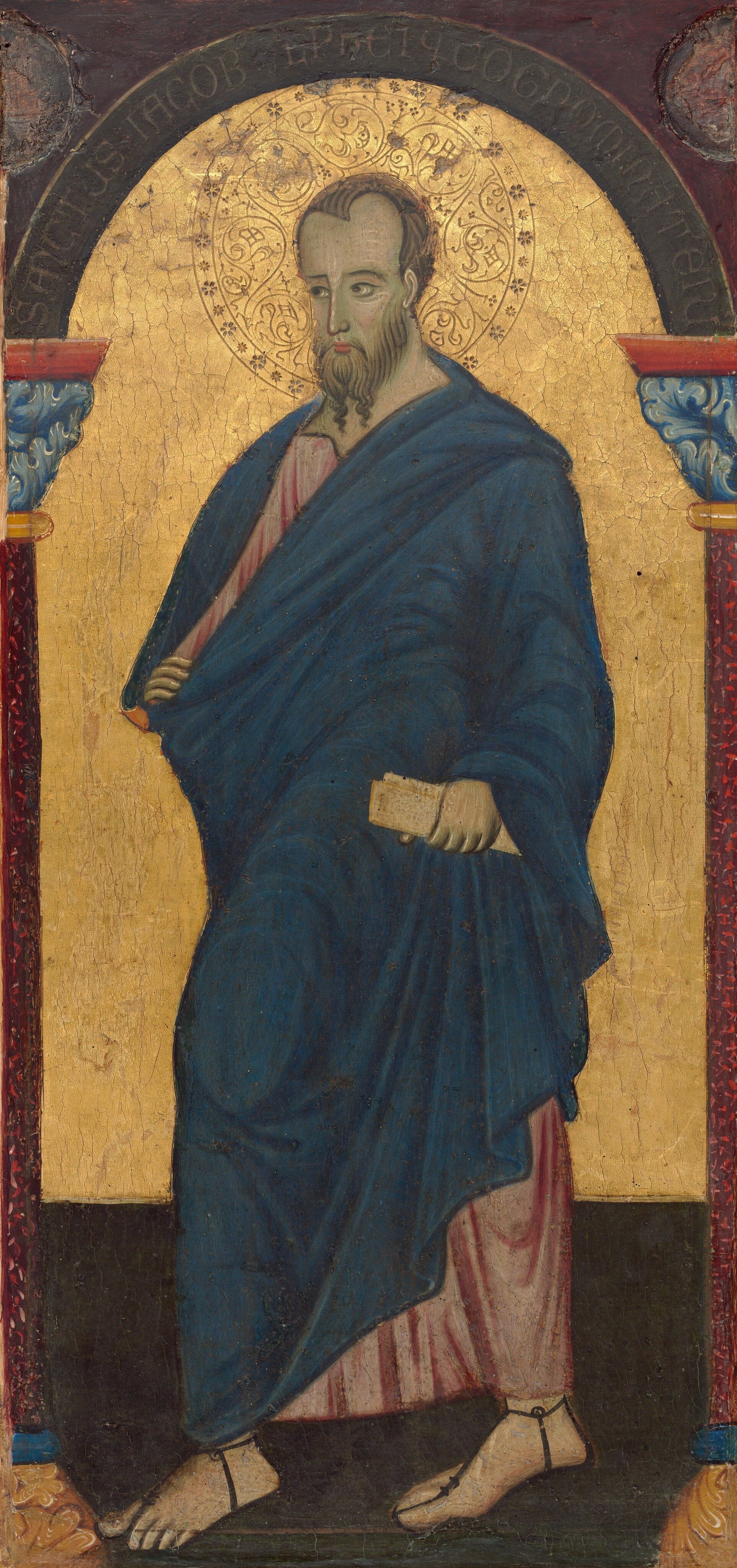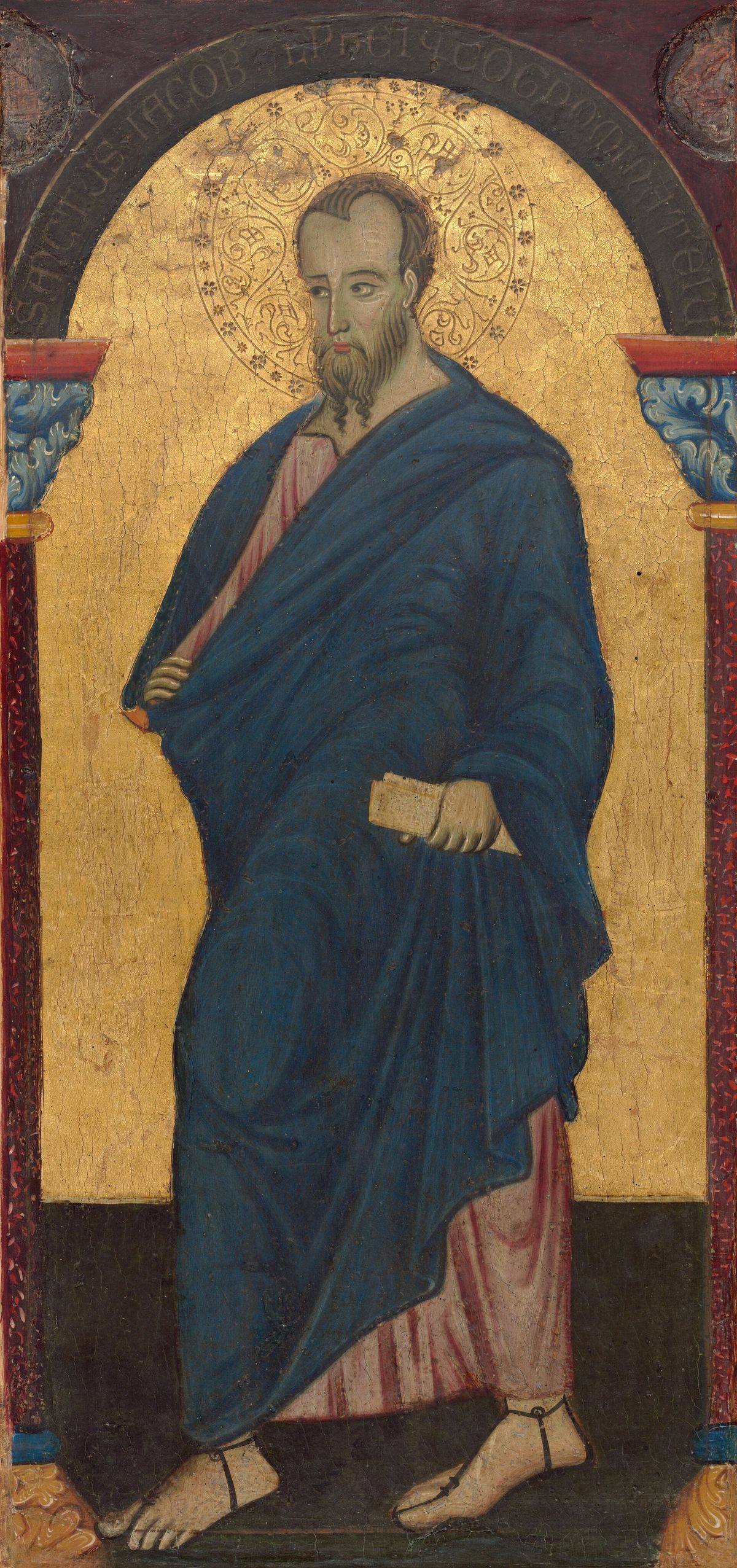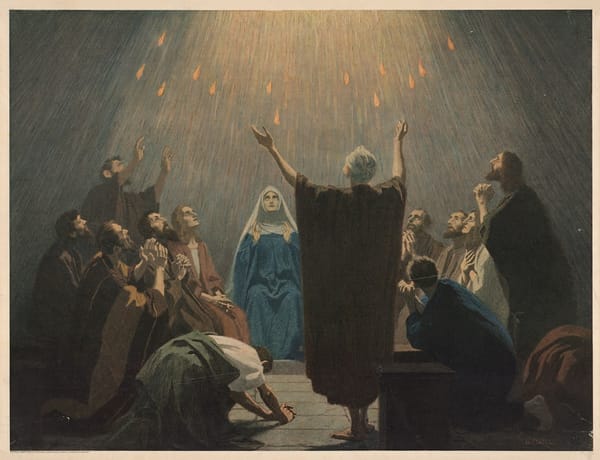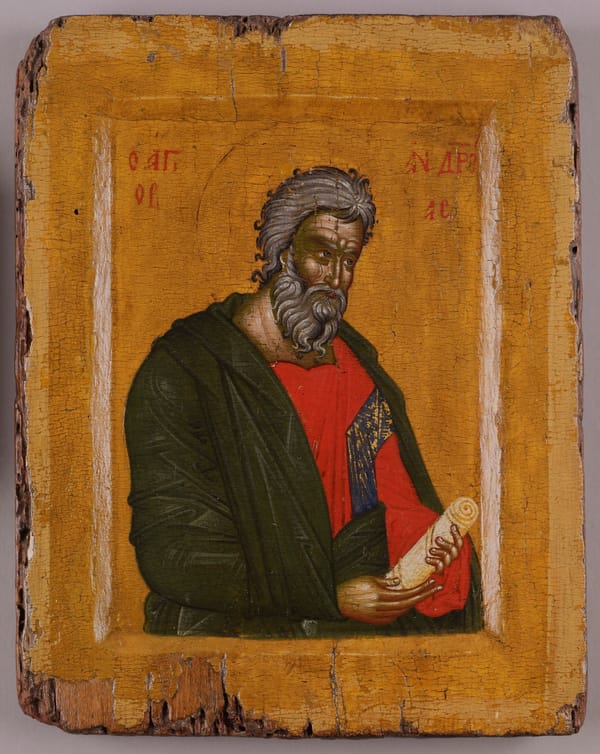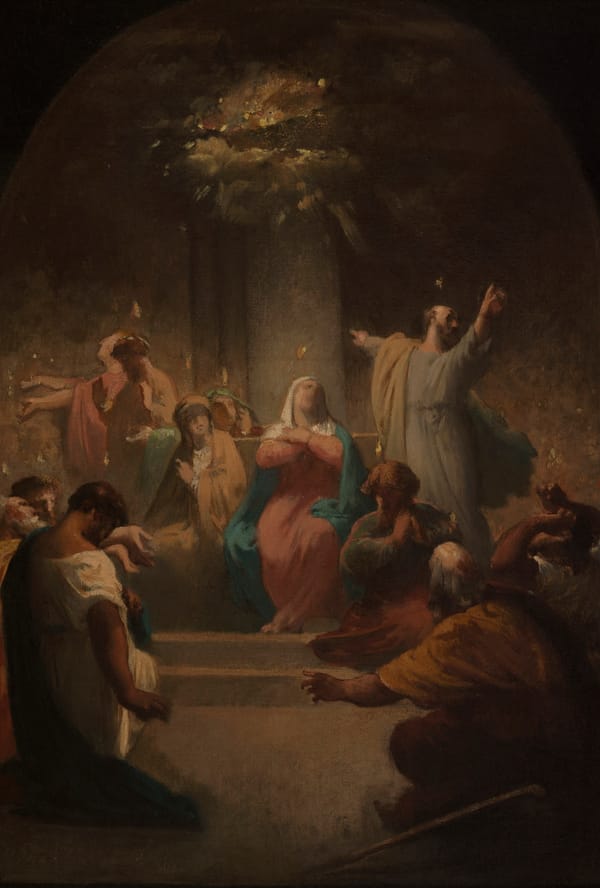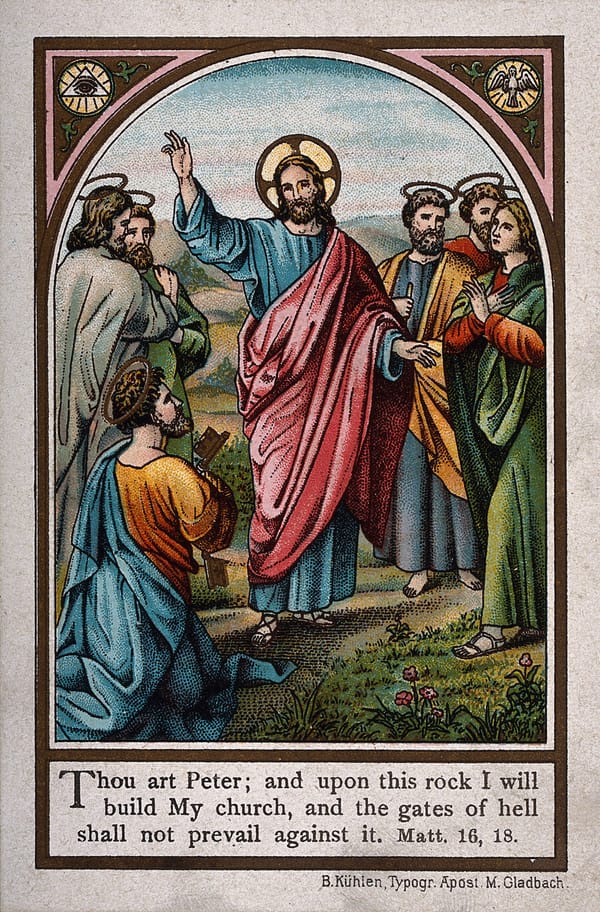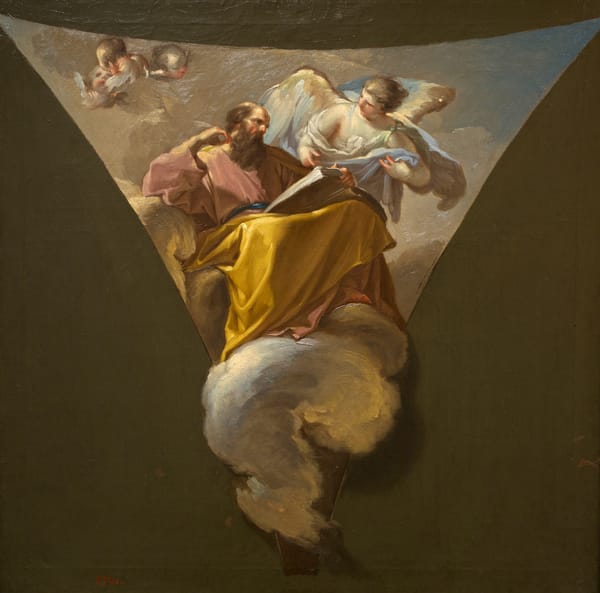Saint James Minor is one of the more elusive of Jesus’s disciples. He is usually identified—as in the inscription running along the arch here—as the son of Alphaeus, and by his attribute, a fuller's club. James was said to have been the first bishop of Jerusalem and to have been killed by a mob wielding the wooden club used to soften cloth. In this case, the pose of Saint James with his right arm wrapped in a swath of drapery was inspired by figures adorning an early Christian sarcophagus formerly kept in the same church as the painting.
The name of the man who painted it may be unknown to us, but he must be counted among the leading artists of his time. The Master of Saint Francis (Umbrian, active third quarter 13th century) is noted for rapid, energetic drawing and just this way of communicating through vivid gesture. He received other important commissions, including a fresco cycle in the mother church of the Franciscan order at Assisi, where papal interest (and largesse) insured the highest level of work. The artist may very well have been a Franciscan friar himself.
This panel and another in the National Gallery of Art depicting Saint John the Evangelist originally were part of an altarpiece more than 11 feet long—one of the most important altarpieces made in Italy during the third quarter of the 13th century (see Reconstructions). The altarpiece was located in the church of San Francesco al Prato in Perugia. The Gallery's two panels plus those of Saint Francis and the remaining ten apostles (four panels survive in other museums; the rest are lost) probably flanked a central image of the Virgin and Child (also lost).
Free Downloads Below
Hi-Res
1200px
800px
